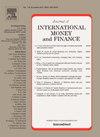Changes in corporate employment under climate risk
IF 3.3
2区 经济学
Q2 BUSINESS, FINANCE
引用次数: 0
Abstract
Using observation data from the meteorological station closest to firms among 928 stations across mainland China, we construct firm-level physical climate risk indicators. We find that climate risks lead firms to tighten employment, which is more pronounced in labor-intensive firms, non-state-owned firms, firms with higher tax burdens, and regions with higher minimum wage standard. Mechanism tests indicate that climate risks reduce corporate employment by shrinking production scales, deteriorating business performance, and intensifying financing frictions. Furthermore, government efforts to build climate-resilient cities, invest in flood control and implement corporate tax reductions, along with the development of the insurance industry, can alleviate the adverse effects of climate risks on local firms’ employment. Firms can also address climate risks by enhancing financial flexibility and organizational resilience. Additionally, firms may also resort to wage reductions in response to climate risks, but whether they choose wage reductions or cutting employment depends on the flexibility to lower their existing wage levels.
气候风险下企业就业的变化
利用中国大陆928个站点中离企业最近的气象站观测数据,构建了企业物理气候风险指标。研究发现,气候风险导致企业收紧就业,这在劳动密集型企业、非国有企业、税负较高的企业和最低工资标准较高的地区更为明显。机制检验表明,气候风险通过收缩生产规模、恶化经营绩效和加剧融资摩擦来减少企业就业。此外,政府努力建设气候适应型城市,投资防洪,实施企业减税,以及发展保险业,可以缓解气候风险对当地企业就业的不利影响。企业还可以通过提高财务灵活性和组织弹性来应对气候风险。此外,企业也可能采取减薪来应对气候风险,但它们是选择减薪还是裁员,取决于降低现有工资水平的灵活性。
本文章由计算机程序翻译,如有差异,请以英文原文为准。
求助全文
约1分钟内获得全文
求助全文
来源期刊

Journal of International Money and Finance
BUSINESS, FINANCE-
CiteScore
4.20
自引率
4.00%
发文量
141
期刊介绍:
Since its launch in 1982, Journal of International Money and Finance has built up a solid reputation as a high quality scholarly journal devoted to theoretical and empirical research in the fields of international monetary economics, international finance, and the rapidly developing overlap area between the two. Researchers in these areas, and financial market professionals too, pay attention to the articles that the journal publishes. Authors published in the journal are in the forefront of scholarly research on exchange rate behaviour, foreign exchange options, international capital markets, international monetary and fiscal policy, international transmission and related questions.
 求助内容:
求助内容: 应助结果提醒方式:
应助结果提醒方式:


